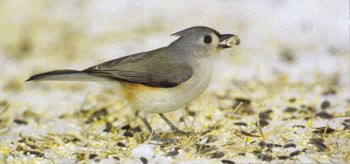We’ve all heard that crows and jays are among the smartest of the avian crew. And we have all year to watch them excel, since they don’t fly south for the winter. But chickadees and cardinals? Juncos and titmice?
Einsteins all, according to Daniel Sol, of the Independent University of Barcelona, and his colleagues. In a new study published in the Proceedings of the Royal Society, they hypothesized that non-migratory birds become more creative at finding food as autumn crystallizes into winter and resources dwindle, while migratory birds are more fixed in their foraging behaviors and thus have to travel long distances to find food.
By examining observations of birds in Europe and Russia and collecting new data on bird brain size and foraging methods, the researchers confirmed that resident birds become more creative at finding food in the winter. They also found that brain size, which positively correlates with innovation in feeding behaviors, is greater in resident birds and erodes in non-resident birds in proportion to the length of their migration routes.
While brain and also body size are larger in resident birds, it is the flexibility in feeding behaviors – the ability to exploit multiple food resources, to take advantage of food opportunities as they become available, and to learn new foraging strategies – that led the researchers to conclude that non-migratory birds really are the only birds capable of making it through to the far side of a harsh northern winter.
But why would some individuals be selected through evolution to migrate, while others stayed put and evolved larger brains? A case of chicken-and-egg, say the researchers, and one that has yet to be solved. Brains are metabolically expensive to maintain – and when it’s a tradeoff between energy for flight and energy for gray matter, something has to give. Sol’s team believes the small brains came first, and the lack of foraging innovation, followed by the evolution of migration, was the consequence.
Unfortunately for some migratory species, say the researchers, limited behavioral flexibility may prove to be their downfall in this time of rapid habitat loss and change. They note that a number of migratory bird species have experienced declines in the past few decades.
Though resident birds may be smarter, migratory birds could have the upper hand in one area – escaping localized pollution. According to a separate study by R. Given Harper of Illinois Wesleyan University, resident birds in North America have greater numbers and higher concentrations of chemicals such as that old culprit, DDT, in their bodies than do migratory birds – perhaps because these chemicals tend to evaporate in the tropics and blow northward and concentrate.
Whether behavioral flexibility or limited exposure to toxins benefits resident or migratory birds isn’t clear – what is clear is that environmental conditions have always driven evolutionary responses.


